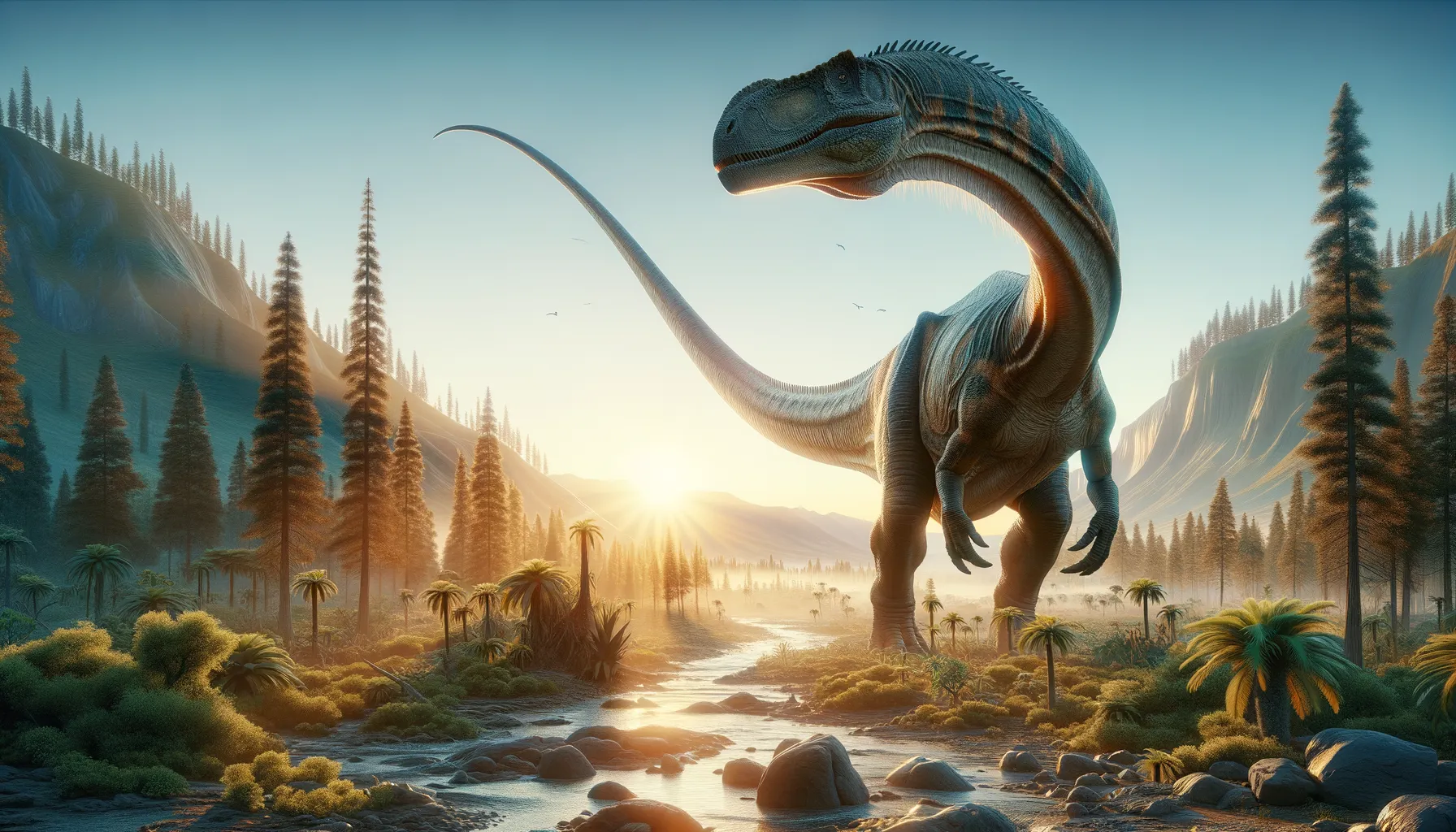
Yongjinglong
Giant herbivore of ancient China.
Period
Cretaceous
Length
Length estimated at about 15 to 18 meters.
Height
Height could reach approximately 10 meters.
Weight
Estimated to weigh over 20 tons.
Yongjinglong was a large sauropod dinosaur that roamed what is now China during the early Cretaceous period. Known for its enormous size, it was one of the plant-eating giants of its time, recognizable by its long neck and tail. Its discovery added valuable insights into the diversity and distribution of sauropods in Asia, highlighting the rich ecosystem around 100 million years ago.
Diet
Yongjinglong was a herbivore that fed primarily on the abundant plant life. It likely used its long neck to reach leaves on tall trees, as well as low-lying vegetation. Its large size meant it had to consume a vast amount of foliage each day to sustain itself.
Hunting
As a herbivore, Yongjinglong did not engage in hunting behavior. Instead, it would have relied on its massive size for protection against predators. Its feeding strategy was centered around migrating seasonally to exploit areas with abundant plant resources.
Environmental challenges
Yongjinglong lived in a time marked by volcanic activity and fluctuating sea levels that shaped its environment. Competition for food with other herbivores would have been a constant challenge. Furthermore, the climate may have shifted during its era, affecting plant growth and availability. These challenges influenced its adaptation and distribution patterns over time.
Speed
Slow-moving due to its massive size.
Lifespan
Estimated to be several decades long.
First discovery
Unearthed in Gansu Province, China in 2013.
Fun Facts
- Yongjinglong was a plant-eating dinosaur that lived during the Early Cretaceous period, around 100 million years ago.
- This dinosaur was a type of sauropod, which are famous for their long necks and tails.
- Yongjinglong fossils were discovered in what is now China, specifically in the Gansu Province.
- The name Yongjinglong means 'dragon from Yongjing' which references the county where its fossils were found.
- Yongjinglong was part of the family Titanosauria, which includes some of the largest land animals ever to exist.
- This dinosaur's fossils have helped scientists understand more about sauropods' movements and habitat during the Early Cretaceous.
Growth and Development
Yongjinglong would have experienced a slow and steady growth rate, typical of large sauropods. From hatching, it would gradually increase in size for several decades before reaching full maturity. This long growth period was crucial for developing its massive bones and muscles needed for supporting its size.
Habitat
Yongjinglong thrived in a lush environment with diverse flora, including forests of conifers and ferns. Seasonal changes would have influenced its habitat, prompting migrations to areas rich in vegetation. Water sources would have been essential, with rivers and lakes dotted across its native landscape.
Interaction with other species
Yongjinglong coexisted with various dinosaur species, including other herbivores and potential predators. Its size provided an advantage in avoiding most predation threats. It may have adapted social behaviors like herding to enhance protection and efficient foraging.
Natural lifespan
The natural lifespan of Yongjinglong could span over 50 years.
Reproduction
Yongjinglong, like other sauropods, laid eggs. It likely had nesting grounds where females laid clutches of eggs in sandy or soft soil. Hatchlings would have been vulnerable and required rapid growth to increase survival chances.
Social behaviour
Yongjinglong may have exhibited herd behavior, moving in groups to protect against predators. Social interactions could include communication sounds and movements to coordinate activities within the herd. This behavior would also facilitate learning and adaptation within the group.
Fossil locations
Fossils of Yongjinglong have primarily been discovered in the Lanzhou Basin of Gansu Province, China. These finds add critical data to the understanding of sauropod distribution in Asia. The region is known for its rich deposits, making it a hotspot for paleontological research.
